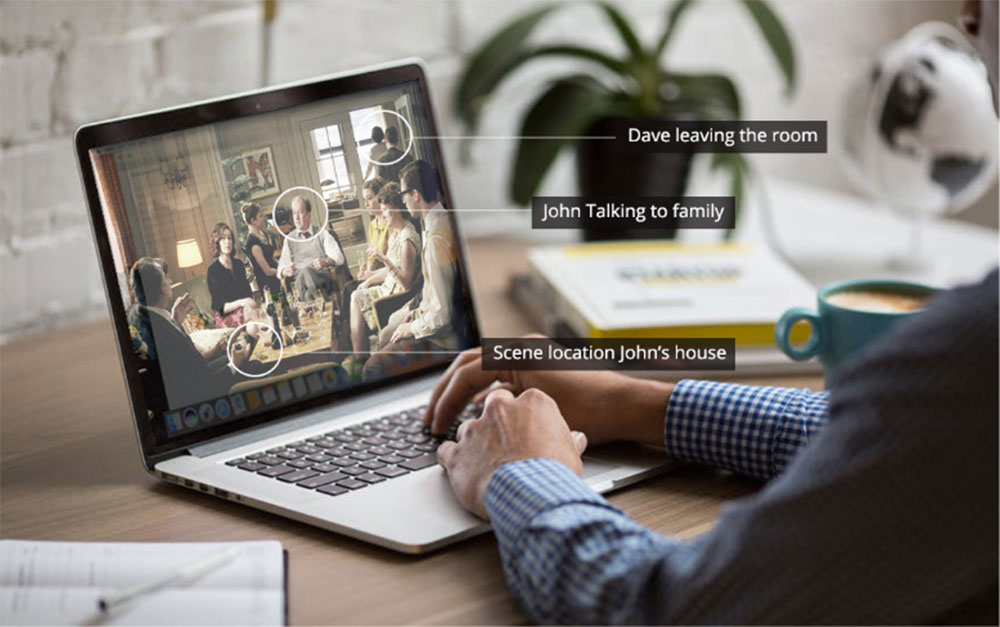Artificial Intelligence (AI) has become a major talking point in recent years, and many companies are investing heavily in developing AI solutions. The term was coined in 1956 by John McCarthy at Dartmouth College, and today, AI has moved from a theoretical concept to a reality.
AI technology can perform tasks typically associated with human intelligence, such as reasoning, learning, problem-solving, and perception. It’s already changing the way we live our lives; from self-driving cars to smart speakers, AI is everywhere.
Media and entertainment brands are facing significant market and industry shifts driven by AI-powered innovations. What does this mean for your company, and how can you prepare for and adapt to these changes?
AI is Already Gaining Traction
Most media industry players already use AI-based solutions within their business workflows. One excellent example of this is Netflix.
1. Netflix
Netflix is easily a pioneer of AI integration due to its intelligent cast compilation and viewer data analytics. They also apply a sophisticated deep learning and computer vision algorithm to their recommendation engine.
In addition, its video encoding analyzes each shot in a video and compresses it without affecting the image quality, thus reducing the amount of data it uses. These examples of innovation were far beyond the industry standard when they were implemented and are still evolving today.
Recommended reading: How to Elevate Your OTT Through Predictive Personalization [Whitepaper]2
2. 20th Century Fox and IBM
Another example of AI in the media industry is 20th Century Fox and IBM, who used Watson APIs and machine learning techniques to analyze hundreds of horror and thriller movie trailers.
After learning what keeps audiences on the edge of their seats, the AI system suggested the top 10 moments from the movie Morgan for a trailer. Then an IBM filmmaker edited and arranged them together to create an enticing trailer.
Since then, 20th Century Fox has used AI and deep learning models to predict which audience will most likely see a film based on the movie trailer. They can accurately predict audience type and attendance for existing movies and soon-to-be-released movies.
3. Disney
The same AI progress is true for other media and entertainment giants like Disney. Disney works hard on mixed and augmented reality projects, robotics, human-computer interaction, computer vision, and more.
On the AI front, Disney and the University of California used a deep learning approach to denoise Monte Carlo-rendered images, which produced high-quality results suitable for production.
For the film “Finding Dory,” a convolutional neural network was trained to learn the complex relationship between noisy and reference data across a large set of frames with varying distributed effects and produce noise-free image quality.
One of Disney’s most recent evolutions of AI has been the project StoryPrint, which created “interactive visualizations of creative storytelling that facilitates individual and comparative structural analyses.” Disney makes a great example of what you can do with AI.
4. Comcast
Finally, Comcast uses machine learning models (among other solutions) to predict customer issues right before they occur.
According to Adam Hertz, VP of Engineering at Comcast, their technology is 90% accurate in predicting if a technician needs to drive to a subscriber’s home to fix a connectivity problem.
Major tech vendors like Amazon, Microsoft, IBM, and Google also work hard to compete in this technology space. From pre-built AI to customizable ML and deep learning services and tools, you can find numerous solutions and services with cognitive capabilities, natural language processing, and more.
Recommended reading: Optimization Algorithms for Machine Learning Models [Whitepaper]
How AI is Disrupting the Media Industry

Even without thorough scientific research studies — and just by observing the industry itself — it would be fairly easy to spot the key areas where artificial intelligence is changing the media business.
Video Workflows
Tagging and video indexing used to be a slow and labor-consuming process. But recent computer vision development can save companies time and money. Another improvement is incorporating automated metadata extraction that gives insights into the footage and niche experiences.
The way that your video is streamed is also essential. And again, AI already contributes to this situation since it ensures the best possible image quality while optimizing network usage.
It also utilizes intelligent fault diagnostics during video delivery instead of a manual alert configuration and makes your content accessible to international or hearing-impaired audiences using subtitling and captioning.
Content Creation
Bill Gates’ phrase, “Content is King,” is more relevant now than ever before. Industry incumbents and new-gen video services spend billions on original content. While AI can’t completely create content independently, it’s getting close with human assistance.
Intelligent technology solutions can also help directors produce pixel-perfect videos. AI can analyze your footage to select the best possible shots for specific needs, such as proper color scheme, the right actor emotion, and the best place to cut or merge scenes.
These tasks are easier for AI-based software to accomplish than for humans. AI can put together the best scenes, create custom ads on the fly, produce more engaging movie trailers, and much more.

User Experience
If the content is king, I would call the user experience queen. Apart from original programming, how a brand interacts with customers will define whether they will stick with their service.
The most common way to connect with users is through targeted content and sophisticated recommendations. This is a great start, but more should be done.
Such as custom pages or screen layouts, banners tailored to profile data, and payment workflows specific to habits and preferences. Or imagine an intelligent ad system capable of not only sending relevant advertising based on content but also defining a user’s relevant emotional state and the proper timing to insert this ad.
It’s Not as Complicated as We Might Think
Another factor businesses must consider is the cost of implementation. Depending on your goals, available basis, interactions with third-party tools, and the complexity of specific workflows, the cost of your project could, in theory, skyrocket.
But purpose-built AI can be more affordable. The market is full of tools, frameworks, libraries, and datasets ready to be leveraged.
For example, Tensorflow, Caffe, Microsoft Cognitive Toolkit, Amazon Machine Learning, Torch, and Scikit Learn are only some available open-source frameworks for deep learning.
Training datasets are no longer an obstacle to machine learning. Either through facial recognition, object detection and recognition, sound data (e.g., speech and music), or text data. There are countless options to explore.
In a nutshell, if you have specific, well-defined tasks that consist of repetitive and not creative work, then it might be a good use case for AI integration.
Final Takeaways
AI has been around since the 1950s, but companies have begun using it to create new media experiences.
From voice recognition software to chatbots, AI technology improves many aspects of our lives and workflows. And now, it’s poised to revolutionize how we consume content and media online.
We will soon see a shift from passive consumption to active engagement with AI, and the future of media will include far more AI technology.
Learn More:
 BlogsNovember 30, 2023GlobalLogic
BlogsNovember 30, 2023GlobalLogic


